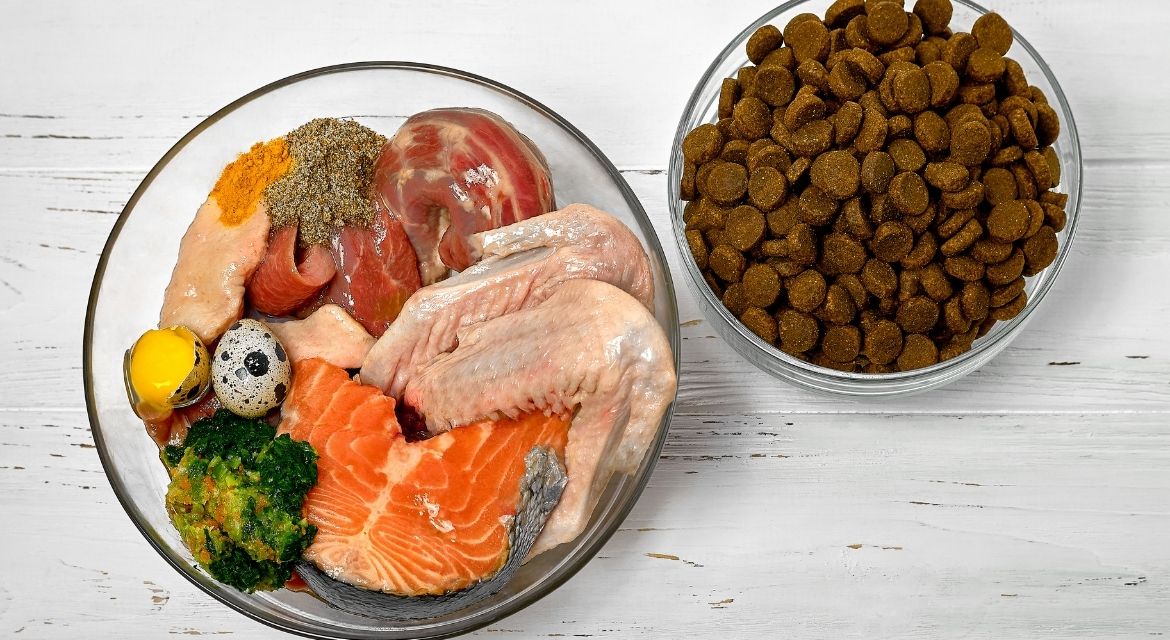 20 May
20 MayBest Dog Food for Allergies: The Complete Veterinarian’s Guide for 2025
Table of Contents
Food allergies in dogs have become increasingly prevalent, affecting millions of pets worldwide. If your furry companion constantly scratches, develops recurring ear infections, or experiences digestive issues, they might be suffering from food allergies. Finding the best dog food for allergies can transform your pet’s quality of life, eliminating uncomfortable symptoms and restoring their natural vitality.
This comprehensive guide explores everything you need to know about selecting the best dog food for allergies, backed by veterinary expertise and the latest research in canine nutrition. From understanding the science behind food allergies to reviewing top-rated hypoallergenic brands, we’ll help you make informed decisions for your dog’s health.
Understanding Canine Food Allergies: The Science Behind the Symptoms
What Exactly Are Food Allergies in Dogs?
Food allergies occur when your dog’s immune system mistakenly identifies specific food proteins as harmful invaders. This triggers an inflammatory response that manifests through various uncomfortable symptoms. Unlike food intolerances, which primarily affect digestion, true food allergies involve the immune system and can cause systemic reactions throughout your dog’s body.
The immune system’s overreaction to ordinary food proteins creates antibodies that attack these substances whenever they’re consumed. This process leads to chronic inflammation, affecting your dog’s skin, digestive system, and overall well-being. Understanding this mechanism is crucial when selecting the best dog food for allergies.
Recognizing Food Allergy Symptoms in Dogs
Identifying food allergies requires careful observation of your dog’s behavior and physical condition. Common symptoms include:
Skin-Related Signs:
- Persistent itching and scratching, especially around paws, face, and ears
- Red, inflamed skin with hot spots
- Hair loss from excessive scratching
- Recurring skin infections
- Licking paws until they become raw
Digestive Symptoms:
- Chronic diarrhea or loose stools
- Frequent vomiting
- Excessive gas
- Bloating and abdominal discomfort
- Changes in appetite
Other Indicators:
- Chronic ear infections with dark discharge
- Watery eyes and runny nose
- Behavioral changes due to discomfort
- Lethargy and reduced activity levels
These symptoms can significantly impact your dog’s quality of life, making it essential to find the best dog food for allergies that addresses their specific needs.
The Growing Prevalence of Food Allergies
Recent veterinary studies indicate that food allergies affect approximately 10-15% of all dogs, with certain breeds showing higher susceptibility. Environmental factors, including increased exposure to processed foods and reduced dietary diversity, may contribute to this rising trend.
Common Food Allergens: What to Avoid
Primary Protein Allergens
Proteins are the most common triggers for food allergies in dogs. The most frequently implicated proteins include:
Beef: Despite being a popular ingredient in many commercial dog foods, beef is one of the leading causes of allergic reactions. Dogs can develop sensitivity to beef proteins even after years of consuming them without problems.
Chicken: Another common allergen, chicken appears in numerous dog food formulations. Many dogs who react to chicken may also react to turkey due to similar protein structures.
Dairy Products: Lactose intolerance is common in dogs, but some also develop true allergies to milk proteins like casein and whey.
Fish: While less common, some dogs develop allergies to specific fish proteins, particularly salmon and tuna.
Pork: Though less frequently used in commercial dog foods, pork can still trigger allergic reactions in sensitive dogs.
Carbohydrate and Grain Allergens
Certain carbohydrates and grains can also trigger allergic reactions:
Wheat: Contains gluten and other proteins that can cause allergic responses in susceptible dogs.
Corn: A common filler in many commercial dog foods that can trigger both allergies and intolerances.
Soy: Often used as a protein supplement but can cause allergic reactions in some dogs.
Rice: While generally well-tolerated, some dogs can develop rice allergies, particularly to brown rice.
Emerging Allergens
Recent research has identified new potential allergens in modern dog foods:
Legumes: Peas, lentils, and chickpeas, commonly used in grain-free formulations, are becoming increasingly problematic for some dogs.
Exotic Proteins: As novel proteins become more mainstream, some dogs are developing allergies to previously uncommon ingredients like kangaroo or bison.
When searching for the best dog food for allergies, avoiding these common triggers is essential for managing your dog’s symptoms effectively.
The Elimination Diet: Gold Standard for Diagnosis
How Elimination Diets Work
An elimination diet remains the most reliable method for identifying food allergies in dogs. This process involves feeding your dog a carefully controlled diet containing proteins and carbohydrates they’ve never consumed before, then gradually reintroducing potential allergens to observe reactions.
The elimination diet typically lasts 8-12 weeks, during which your dog consumes only the prescribed hypoallergenic food. This period allows the immune system to calm down and previous allergens to clear from the body. Once symptoms subside, individual ingredients are reintroduced one at a time to identify specific triggers.
Implementing an Effective Elimination Diet
Success with an elimination diet requires strict adherence to guidelines:
- Complete dietary control: Remove all treats, table scraps, and flavored medications
- Novel protein selection: Choose proteins your dog has never eaten
- Single carbohydrate source: Use one carbohydrate that’s unlikely to cause reactions
- Patience and consistency: Maintain the diet for the full recommended period
- Detailed record-keeping: Document all foods consumed and symptoms observed
Working with a veterinarian is crucial when implementing an elimination diet, as they can recommend the best dog food for allergies suited to your dog’s specific situation.
Novel Proteins: The Foundation of Allergy-Friendly Diets
Understanding Novel Proteins
Novel proteins are protein sources that your dog has never consumed before, making them ideal for managing food allergies. Since the immune system hasn’t been exposed to these proteins, it’s less likely to mount an allergic response.
Top Novel Protein Sources
Venison: Wild deer meat offers a lean, easily digestible protein that’s rarely used in commercial dog foods, making it an excellent choice for allergic dogs.
Duck: Rich in omega-3 fatty acids and B vitamins, duck provides excellent nutrition while being hypoallergenic for most dogs.
Rabbit: A traditional novel protein that’s highly digestible and contains essential amino acids for optimal health.
Kangaroo: Lean and sustainable, kangaroo meat is becoming increasingly available and offers unique nutritional benefits.
Bison: Similar to beef nutritionally but from a different animal family, reducing cross-reactivity risks.
Fish Options: Unique fish like pollock, whitefish, or mackerel can serve as novel proteins for dogs who haven’t consumed them previously.
When selecting the best dog food for allergies, novel proteins form the foundation of an effective hypoallergenic diet.
Limited Ingredient Diets: Simplifying Nutrition
The Philosophy Behind Limited Ingredient Diets
Limited ingredient diets (LID) contain fewer components than traditional dog foods, making it easier to identify and avoid potential allergens. These formulations typically feature one protein source, one carbohydrate, and essential vitamins and minerals.
Benefits of Limited Ingredient Formulations
- Simplified troubleshooting: Fewer ingredients mean easier identification of problematic components
- Reduced allergen exposure: Lower chance of encountering multiple allergens simultaneously
- Cleaner nutrition: Focus on high-quality, essential ingredients without unnecessary additives
- Digestive benefits: Simpler formulations are often easier to digest
Key Considerations for Limited Ingredient Diets
While limited ingredient diets can be excellent for managing allergies, they must still provide complete nutrition. The best dog food for allergies balances simplicity with nutritional completeness, ensuring your dog receives all essential nutrients despite dietary restrictions.
Hydrolyzed Protein Diets: Advanced Allergy Management
The Science of Protein Hydrolysis
Hydrolyzed protein diets represent cutting-edge technology in managing severe food allergies. During hydrolysis, proteins are broken down into very small fragments (peptides) that are too small for the immune system to recognize as allergens.
How Hydrolyzed Proteins Work
The hydrolysis process uses enzymes or heat to cleave protein bonds, creating peptides smaller than those that typically trigger allergic reactions. These microscopic protein fragments retain nutritional value while minimizing allergenic potential.
Benefits and Limitations
Advantages:
- Highly effective for severe allergies
- Maintain nutritional value
- Reduce inflammatory responses
- Suitable for dogs with multiple protein allergies
Considerations:
- Often require veterinary prescription
- More expensive than standard foods
- May take time for dogs to accept the taste
- Not necessary for mild allergies
Hydrolyzed protein diets often represent the best dog food for allergies in cases where other approaches have failed.

Comprehensive Review: Best Dog Food for Allergies in 2025
Premium Hypoallergenic Brands
Hill’s Prescription Diet z/d This veterinary-exclusive formula features hydrolyzed chicken proteins and a single carbohydrate source. Clinical studies demonstrate significant improvement in allergy symptoms within 4-6 weeks. The formula includes omega-3 fatty acids for skin health and prebiotics for digestive support.
Royal Canin Hydrolyzed Protein Available in multiple flavors including chicken and soy, this prescription diet uses advanced hydrolysis technology. The formula is specifically designed for dogs with severe food allergies and includes antioxidants for immune support.
Blue Buffalo Basics Limited Ingredient This over-the-counter option features novel proteins like duck or salmon with simple carbohydrates. The grain-free formula includes omega fatty acids and probiotics for overall health support.
Natural Balance L.I.D. Limited Ingredient Available in multiple protein options including venison, duck, and fish, this affordable line provides quality nutrition for allergic dogs. Each formula contains a single protein source and limited additional ingredients.
Wellness Simple Limited Ingredient Featuring novel proteins and minimal ingredients, this line focuses on easy digestion and allergy management. Options include turkey, salmon, and lamb formulations.
Wet Food Options
Many dogs with allergies benefit from wet food formulations, which often contain fewer preservatives and additives than dry kibble. Top wet food options include:
- Hill’s Prescription Diet z/d Canned: Matches the dry formula’s benefits in a moisture-rich format
- Blue Buffalo Basics Limited Ingredient Wet: Provides hydration while maintaining simple ingredients
- Royal Canin Hydrolyzed Protein Wet: Offers the same advanced protein technology in a palatable wet format
Raw and Freeze-Dried Options
Some pet owners prefer raw or freeze-dried diets for better ingredient control:
Stella & Chewy’s Freeze-Dried: Single-protein formulations with minimal processing Primal Raw: Frozen raw diets with novel protein options Instinct Raw Boost: Combines kibble with freeze-dried raw for convenience
The best dog food for allergies depends on your dog’s specific sensitivities, preferences, and your lifestyle requirements.
Homemade Diets: Complete Control Over Ingredients
Benefits of Homemade Allergy Diets
Preparing homemade meals gives you complete control over ingredients, ensuring your dog avoids all known allergens. This approach allows for customization based on your dog’s preferences and specific nutritional needs.
Essential Components of Homemade Allergy Diets
Protein Sources:
- Novel proteins like venison, rabbit, or duck
- Ensure proper cooking to eliminate harmful bacteria
- Calculate protein requirements based on your dog’s weight and activity level
Carbohydrates:
- Sweet potatoes, quinoa, or white rice
- Provide energy and fiber for digestive health
- Introduce new carbohydrates gradually
Healthy Fats:
- Fish oil for omega-3 fatty acids
- Coconut oil for medium-chain triglycerides
- Calculate fat content to prevent obesity
Supplements:
- Calcium for bone health
- Multivitamins to prevent deficiencies
- Probiotics for digestive support
Working with Veterinary Nutritionists
Creating balanced homemade diets requires professional guidance. Veterinary nutritionists can formulate recipes that meet all your dog’s nutritional needs while avoiding allergens. Regular monitoring ensures the diet maintains optimal health.
Transitioning to the Best Dog Food for Allergies
The Importance of Gradual Transition
Sudden dietary changes can cause digestive upset even with hypoallergenic foods. A gradual transition over 7-10 days allows your dog’s digestive system to adapt while minimizing discomfort.
Step-by-Step Transition Protocol
Days 1-2: Mix 25% new food with 75% current food Days 3-4: Increase to 50% new food, 50% current food Days 5-6: Use 75% new food, 25% current food Days 7-8: Serve 100% new food Days 9-10: Monitor for any adverse reactions
Monitoring During Transition
Watch for signs of digestive upset, changes in stool consistency, or recurring allergy symptoms. If problems arise, slow the transition process or consult your veterinarian.
Managing Environmental Allergens Alongside Diet
The Connection Between Food and Environmental Allergies
Many dogs with food allergies also suffer from environmental sensitivities. Addressing both simultaneously provides the best outcome for your pet’s comfort and health.
Environmental Management Strategies
Regular Grooming:
- Weekly baths with hypoallergenic shampoo
- Daily brushing to remove allergens from fur
- Cleaning paws after outdoor activities
Home Environment:
- Regular vacuuming with HEPA filters
- Washing bedding in hot water weekly
- Using air purifiers in sleeping areas
Lifestyle Modifications:
- Avoiding walks during high pollen times
- Creating allergen-free zones in the home
- Regular vet check-ups for monitoring
Combined with the best dog food for allergies, environmental management creates a comprehensive approach to allergy control.
Long-Term Management and Monitoring
Establishing a Monitoring Routine
Successful long-term management requires consistent monitoring of your dog’s health and symptoms. Keep detailed records of:
- Daily symptom severity
- Appetite and eating habits
- Stool quality and frequency
- Energy levels and behavior
- Skin condition and coat quality
Regular Veterinary Check-ups
Schedule regular appointments with your veterinarian to assess your dog’s progress and adjust the management plan as needed. These visits allow for early detection of any complications or changes in your dog’s condition.
Adjusting the Diet Over Time
Your dog’s nutritional needs may change with age, activity level, or health status. Be prepared to modify the diet under veterinary guidance to maintain optimal health throughout your dog’s life.
Cost Considerations and Budget Management
Understanding the Investment
The best dog food for allergies often costs more than regular commercial foods due to specialized ingredients and manufacturing processes. However, this investment typically results in reduced veterinary bills and improved quality of life.
Budget-Friendly Strategies
- Buy in bulk: Purchase larger quantities when possible for better unit prices
- Compare brands: Research different options to find the best value
- Consider generic options: Some store brands offer quality hypoallergenic formulations at lower prices
- Supplement strategically: Add specific nutrients to less expensive base foods under veterinary guidance
Long-term Financial Benefits
While initial costs may be higher, effective allergy management through proper nutrition often results in:
- Reduced veterinary visits for allergy-related issues
- Fewer prescription medications needed
- Prevention of secondary health problems
- Improved quality of life for both dog and owner
Future Trends in Allergy-Friendly Dog Food
Emerging Technologies
The pet food industry continues developing new technologies for managing food allergies:
Advanced Protein Processing: New hydrolysis techniques create even smaller protein fragments Personalized Nutrition: DNA testing to identify specific allergen risks Insect Proteins: Sustainable, novel protein sources with low allergenic potential Functional Ingredients: Specialized compounds that support immune system regulation
Research Developments
Ongoing research explores the relationship between gut health, microbiome balance, and food allergies. Future treatments may focus on modulating the immune system rather than simply avoiding allergens.
Sustainability Considerations
As environmental consciousness grows, manufacturers are developing sustainable sources of novel proteins while maintaining their hypoallergenic properties.
Conclusion: Choosing the Best Path Forward
Selecting the best dog food for allergies requires patience, veterinary guidance, and careful observation of your dog’s response to different approaches. Whether you choose commercial hypoallergenic foods, prescription diets, or homemade solutions, the key is finding what works specifically for your furry companion.
Remember that managing food allergies is an ongoing process that may require adjustments over time. Stay in close communication with your veterinarian, maintain detailed records of your dog’s symptoms and progress, and be prepared to modify your approach as needed.
With the right diet and management strategy, dogs with food allergies can live happy, healthy, and comfortable lives. The investment in finding the best dog food for allergies pays dividends in your pet’s wellbeing and your peace of mind.
If your dog shows signs of food allergies, don’t delay in seeking professional help. Early intervention with appropriate dietary changes can prevent complications and restore your dog’s comfort and vitality. Your veterinarian can guide you toward the best dog food for allergies suited to your dog’s specific needs, ensuring a brighter, healthier future for your beloved companion.
You May Also Like :
How to Stop Dog Barking: The Complete Guide to a Quieter, Happier Pet
Comprehensive Guide to Interactive Cat Toys: Keeping Indoor Cats Happy and Healthy
Dog Grooming at Home: The Complete Guide for Dog Owners
10 Essential Dog Training Tips Every New Puppy Owner Should Know
How to Take Care of a Pet: Essential Guide to Responsible Pet Ownership
The Ultimate Guide to Cat Playtime: Why Play Is Essential for Your Feline’s Health and Happiness
How to Successfully Work from Home with Pets: A Comprehensive Guide
The Mental Health Benefits of Having a Dog: What Every Pet Owner Should Know
How to Groom a Puppy for the First Time: Step-by-Step Guide
Quick Solutions for Daily Pet Care: Simple Strategies for a Happier Pet and Easier Routine




